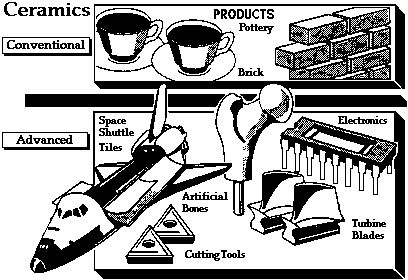![]()
![]()
Your dishes, the windshields of cars, clay pots, fiber
optics, spaceshuttle tiles, bricks in your house, diamonds, cement,and
so much more are all ceramics. Ceramics are brittle and very strong. They
have a variety of properties, but are usually not electrically or thermally
conductive, which makes them insulators. They work well in compression
(pushing down) like bricks, but are usually not strong in tension (pulling
apart). They have ionic and covalent bonding. They usually have high stiffness,
good resistance to corrosive environments, and lower fracture toughness
than metals. With the exception of glasses, ceramics usually cannot be
reshaped by the same forming methods as metals. A mixture of ceramic powders,
water, and binder materials is frequently molded into the desired dimensions
to form engineering products. Don't forget to take notes on your Why
pick my Materials Class? handout.
|
 |
LINKS
It is also important now that you've learned about ceramics,
to look at how their processed again. ![]()
 From the MAST Website from the University of Illinois
From the MAST Website from the University of Illinois